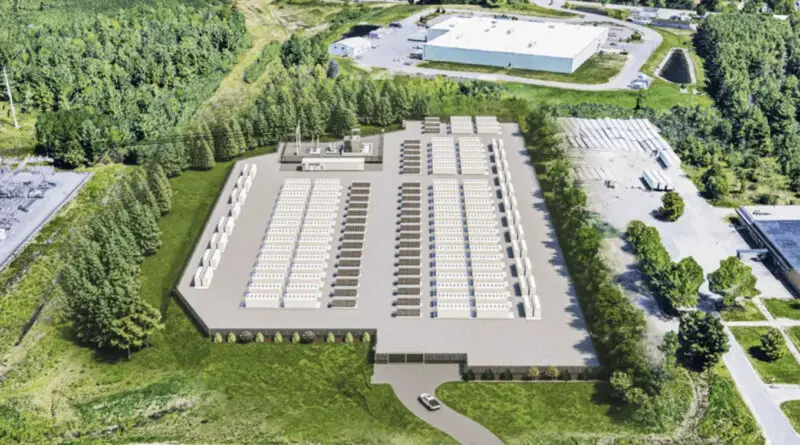Construction on the Cross Town Energy Storage facility in Gorham, Maine, a battery storage project that ranks among the largest in New England, is scheduled to commence this spring. Maine has been actively advocating for clean energy initiatives including the implementation of battery storage projects as part of its efforts to reduce greenhouse gas emissions. In fact, a few years ago the state established a target of installing 100,000 heat pumps by 2025.
Large scale batteries play a role in achieving Maine’s climate objectives. This is because the transition from fuels to renewable energy heavily relies on wind power including the use of floating offshore wind farms to drive an electrified economy. Maine is actively pursuing wind energy as its ocean waters are too deep for turbines mounted directly on the seabed making it a trailblazer in floating wind technology in the Gulf of Maine.
Cost of Cross Town Energy Storage facility
This project, valued at over $100 million will consist of 156 containers resembling tractor trailers spread across a five acre area in the Gorham Industrial Park. These containers will be filled with lithium iron phosphate batteries. The construction is being carried out by Plus Power LLC, a Houston based company that already has 60 energy storage projects in progress, throughout the United States and Canada.

When will construction on Cross Town Energy Storage facility be Completed?
From, around mid 2025 the regional grid operator will have the capability to utilize a maximum of 175 megawatts of power from the Cross Town Energy Storage facility. As reported by the Maine Monitor, the Cross Town Energy Storage facility is a part of a growing movement to construct battery plants. These plants aim to store electricity during times of abundance and release it back into the grid when demand surges. Interestingly there has been an increase in developer requests to connect batteries to the ISO New England high voltage grid. In fact 44% of these requests now involve batteries, which’s a substantial rise, from just three years ago when it was only 10%.
Over the years New England has given the green light for over 1,000 megawatts of new battery capacity to meet electricity demands. These batteries are strategically located near solar farms. There are also independent projects such as Cross Town.
Maine currently operates six battery projects that’re significantly smaller in size compared to Cross Town Energy Storage facility. However Cross Town stands out as a model, for large scale battery storage construction in the state. With its range of capabilities some industry experts refer to these batteries as the versatile “Swiss army knife” of the electric grid.
How important is Cross Town Energy Storage facility?
Cross Town Energy Storage facility will help in alleviating congestion on southern Maine’s constrained electric grid. This can be achieved by absorbing and storing surplus energy as wind power sources continue to grow. The Cross Town Energy Storage facility is conveniently located near a substation operated by Central Maine Power allowing the batteries to establish a connection, with high voltage lines originating from the region.
Project partners
Plus Power has joined forces with Sungrow, a Chinese clean energy company, on a global scale to incorporate their battery systems into the Cross Town Energy Storage facility. Each container measuring 30 feet in length houses a total of 3,072 battery cells. The focus, on safety is paramount as demonstrated by the inclusion of heating and cooling equipment, thermal sensors, fire detection and suppression mechanisms and round the clock monitoring. This comprehensive setup guarantees a sturdy and a safeguarded battery infrastructure.
Maine is already making progress, in the field of energy storage with a combined capacity of 63 megawatts spread across six locations connected to the power grid. Among these locations the largest one stands out with a capacity of 20 megawatts. Cross Town – their upcoming contribution is truly groundbreaking and aligns perfectly with the goal set by the Legislature for 2023. The objective? To reach a capacity of 300 megawatts by 2025. An impressive 400 megawatts, by the year 2030.
Read also: Construction of largest solar farm in Maine completed
Read also: Construction begins at 44MW solar farm in Maine
Read also: Construction begins on US$1 billion electricity corridor, Maine
